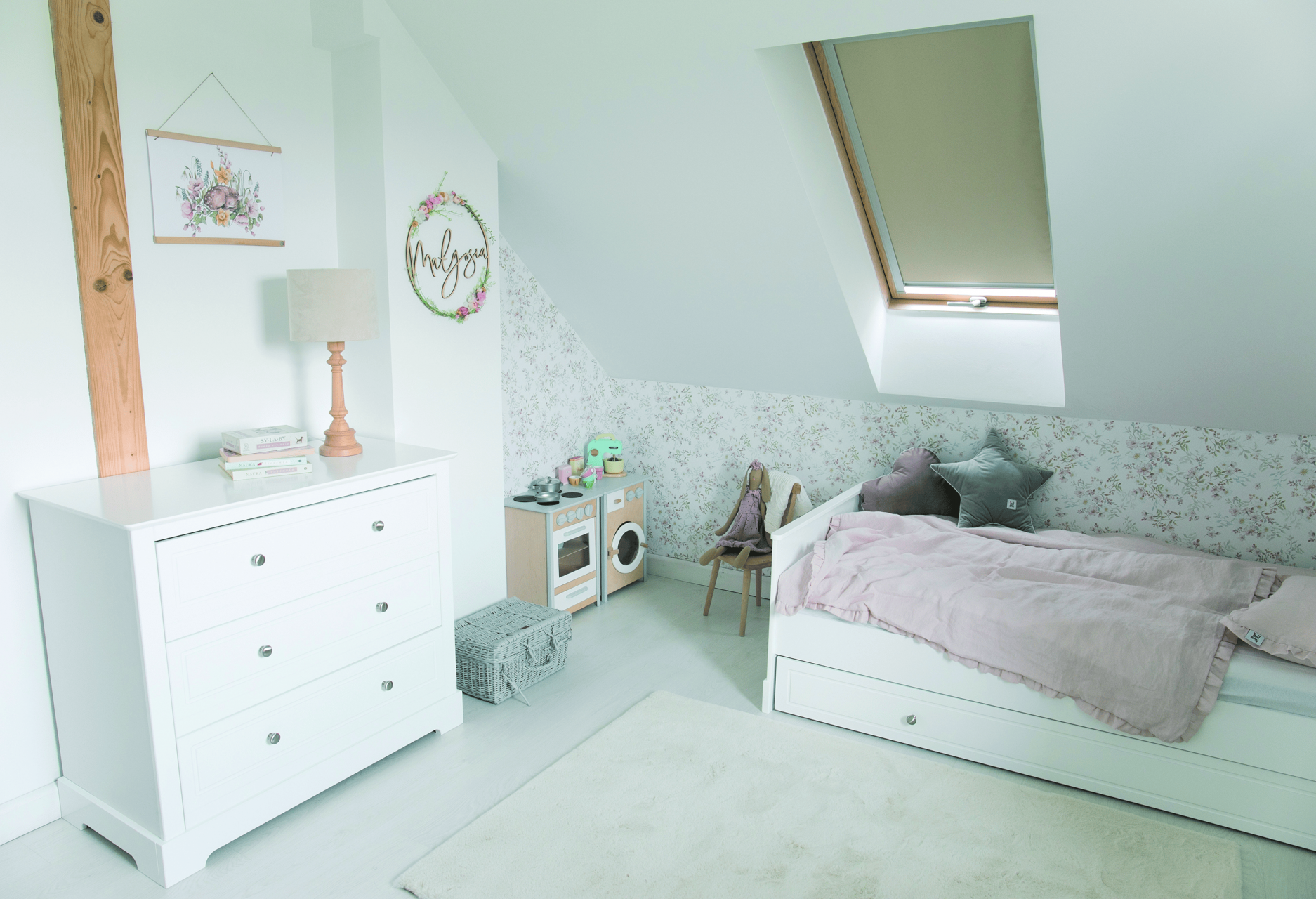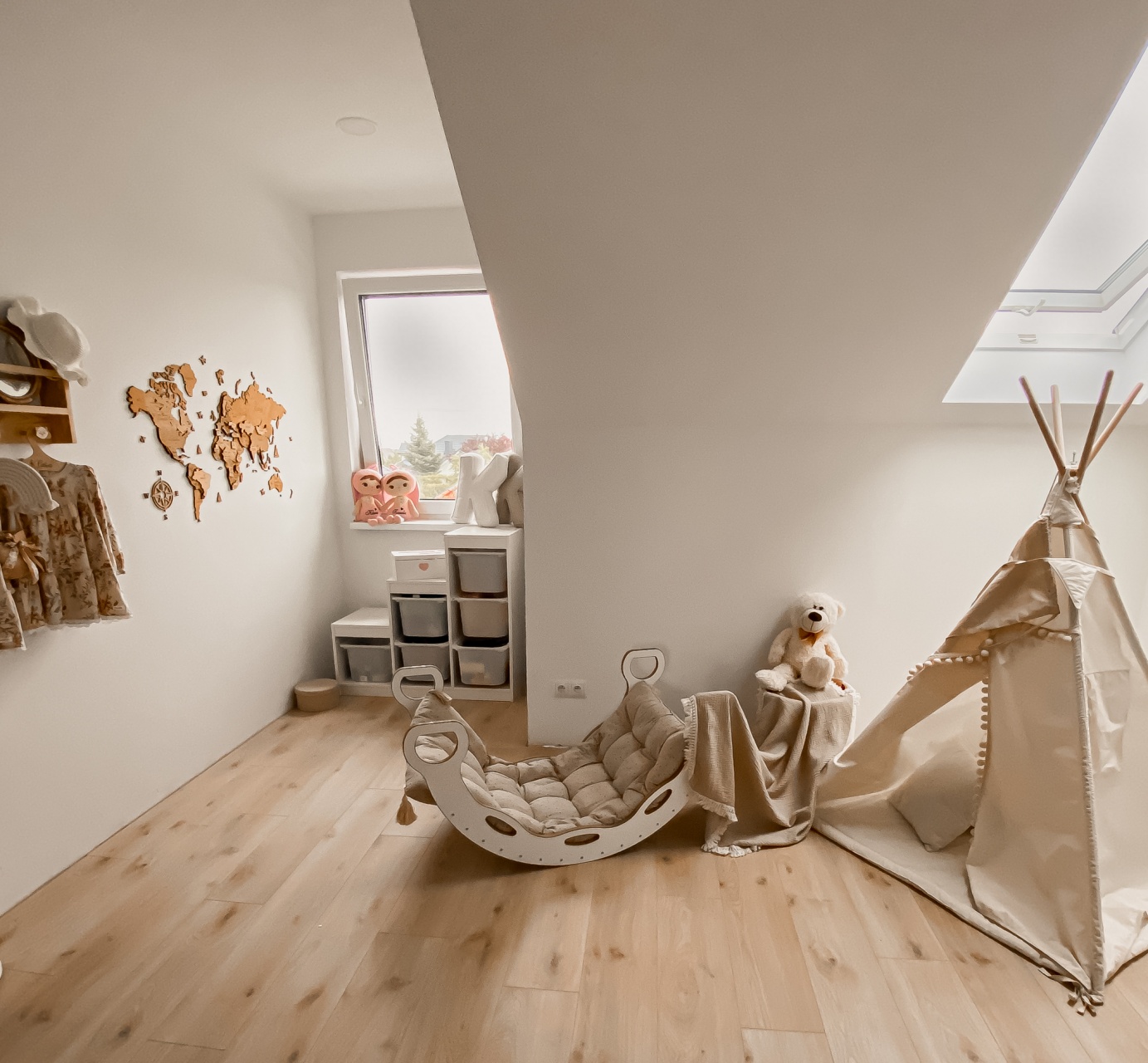Children's Room in the Attic - How to Arrange It?
Everyone needs their own private space, even the youngest members of the family. A child must have their own room that is not shared with other household members. Unfortunately, there is often not enough space for such a setup. This is where a previously unused attic can come to the rescue.
If you’re unsure how to deal with sloping ceilings and need ideas on maximising the available space, here are a few tips to help you create the perfect children's room!
How to Plan the Space in an Attic Children's Room?
From the outset, it’s important to consider the changing needs of the child. Their room must therefore be adaptable. What does this mean? Above all, clever use of the available space is key to achieving the desired result.
To achieve this, it’s a good idea to divide the room into zones: one for sleeping, another for studying, and a third for playing. It’s equally important to ensure that each zone has adequate lighting. High-quality skylights are invaluable for providing natural light, which is essential not only for studying and playing but also for a child’s development.
Many people worry that an abundance of natural light may cause the room to overheat. However, internal roller shutters for roof windows work brilliantly in this case, allowing you to control the amount of light during the day.
This is also the right time to choose interior doors. You can opt for traditional doors, but concealed or sliding doors are excellent alternatives as they save valuable space.

What Furniture to Choose for a Children's Room in the Attic?
Whether it’s a room for young children or teenagers, storage-friendly furniture is essential. Clothes, books, toys, and accessories all need to be accommodated, so any furniture that helps keep clutter at bay is invaluable.
An attic room, with its sloping ceilings, is perfect for customised furniture. This makes use of areas that are difficult to navigate comfortably. Built-in furniture, preferably custom-made by a carpenter to fit the space precisely, ensures maximum utilisation of the room. Even low spaces can be put to good use with chests of drawers or bookcases for storing books and toys.
Finally, a bed is one of the most important pieces of furniture. Placing it in the loft can create a special resting area and establish a cosy, separate bedroom space within the attic.
How to Ensure Proper Lighting in a Children's Attic Room?
As mentioned earlier, good lighting is crucial in a child’s room. While natural light is ideal, it’s not always sufficient. Artificial lighting plays an essential role in ensuring a comfortable environment for studying and playing without straining the eyes.
The three zones of the attic room should each have appropriate lighting. A central pendant lamp or a large ceiling fixture works well for general illumination. A desk lamp with a movable arm is indispensable for the study area, while a wall lamp or decorative lighting, such as a garland resembling a starry sky, is ideal for the sleeping zone.
In lofts with skylights, internal roof window blinds allow for effective light regulation. For added security, you may also consider external roof window blinds.
What Colours and Materials Work Best in an Attic Children's Room?
Bright, intense colours are often used in children's rooms but can be harsh on the eyes. A better approach is to use natural, pastel shades on the walls to create a calm, soothing atmosphere. Accessories, on the other hand, can feature more vibrant and expressive colours to add a lively touch.
For instance, a white ceiling paired with walls painted in light pastel shades like beige or soft blue, complemented by a warm wooden floor, creates a harmonious base. Cheerful, colourful cushions or other accessories in more vibrant hues can add visual interest without disrupting the overall calm.

How to Create a Cosy Atmosphere in a Children's Attic Room?
The atmosphere in a child’s attic room significantly impacts their development and emotions. A well-designed interior can encourage play and learning while soothing negative feelings.
One simple way to enhance the room’s atmosphere is through creative lighting, such as starry sky projections or other imagery that the child finds comforting.
Another effective idea is wall art, which can warm up the space, evoke happy memories, or spark the imagination. Options include cheerful animal paintings, maps of the world designed for children, or personalised photo montages that celebrate beautiful moments from their lives.
How to Utilise Sloped Ceilings in an Attic Room Design?
Attic rooms often feature uneven spaces, with sloping ceilings being a common challenge. However, these can be turned into an asset. Custom-built furniture can utilise these areas for storing items such as clothes, books, or toys.
A sloping area can also be an excellent spot for a child’s bed or cot, creating a cosy corner for restful sleep. For older children, consider placing a table and chairs or a study desk under the slant.
Painting sloped ceilings in light colours can make the room feel taller. Alternatively, wallpaper with vertical stripes can visually elevate the space, making it appear more spacious.






